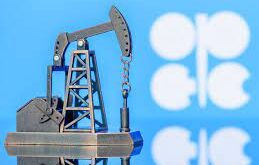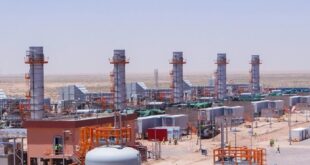Over the last decade. traders cannot remember a year when the oil market was calm except for 2013. when the Organization of the Petroleum Exporting Countries (OPEC) met twice and decided to roll over their production ceiling of 30 million barrels per day (bpd).
In fact. OPEC didn’t have to worry about much at all that year. as the shale oil revolution had yet to disrupt the market supply and demand balance. Oil prices were at $100 and above. and demand was growing well. so producers were happy.
Such conditions are rare — and cannot exist for a full year. Every year thus must start or end with a challenge — and the former will be the case as 2019 dawns.
So what are the main challenges in the coming year? Think of all the opposite reasons that made 2013 happy and calm.
Brent oil prices are hovering around their lowest levels since 2016. Why is that? Most of the sell-off in oil over the recent weeks — and which might continue into next year — has been triggered by negative perceptions over supply and demand.
There have been supply-side disruptions. as more output from North American drillers is expected to hit the market.
Demand is also a major concern next year. as the trade war between the US and China might escalate further. therefore hitting demand in the latter country. the world’s largest buyer of oil.
Furthermore. there is no clarity when it comes to US policies. representing a big unknown for the market. No one can predict the next move by President Donald Trump or the Senate. which is now targeting OPEC with anti-trust bills.
Even US monetary policy is becoming a big risk for oil demand. as the interest rate rise will result in a stronger dollar. which will make buying oil more expensive for developing nations.
With oil prices at levels below the fiscal budget requirements of many OPEC countries. uncertainty over demand. and a possibility of more US shale oil output. next year does not look rosy for OPEC. The question now is what the organization can do about that?
Listening to the latest round of statements by OPEC ministers present at the Organization of Arab Petroleum Exporting Countries (OAPEC) meeting in Kuwait on Sunday. it seems that they only have one tool at the moment: To curtail production by more than announced. if needed. and to keep the cuts in place for the entire year. They will meet in April and decide on that.
Will they succeed? Will going beyond 1.2 million barrels a day of cuts be enough to balance the market and stop the slide in prices? It might work if the cuts are deep and real.
Yet in the last few months of the previous deal. many of the countries did not reach their 100 percent conformity level on the agreed cuts.
If OPEC wants to succeed next year then it’s highly important that they be clear with the market over the objectives. timing. strategy and tactics to be used — unlike what was seen in its communications in the first months of 2018.
A few days ago. OPEC Secretary-General Mohammed Barkindo tried his best to give clarity on the cuts deal. by asking OPEC countries to publish individual targets for the output cut. This clarity should have been there from the day OPEC and a group of non-OPEC producers. led by Russia. announced their agreement in Vienna.
OPEC may be able to succeed in reducing production by the announced target — but this may not be enough. If one producer shoulders all the burden of the cuts — or if others do not cut by enough. or if the communications are vague — then it will be hard for the deal to work in 2019. a year in which political uncertainty will be high and the demand outlook gloomy.
 Iran Energy News Oil, Gas, Petrochemical and Energy Field Specialized Channel
Iran Energy News Oil, Gas, Petrochemical and Energy Field Specialized Channel




